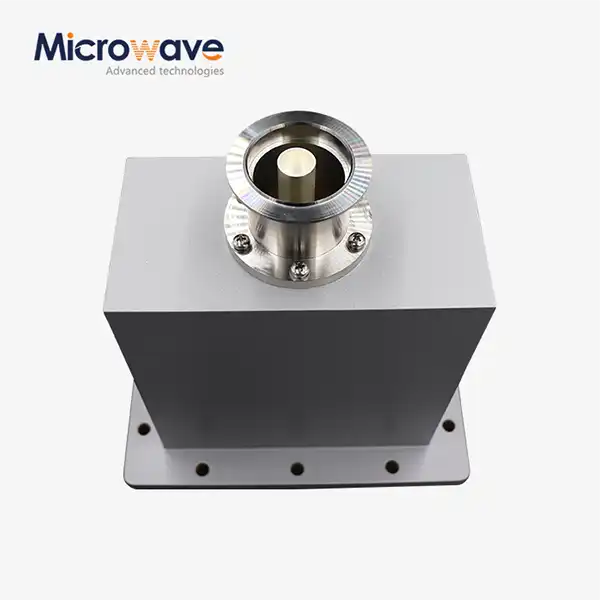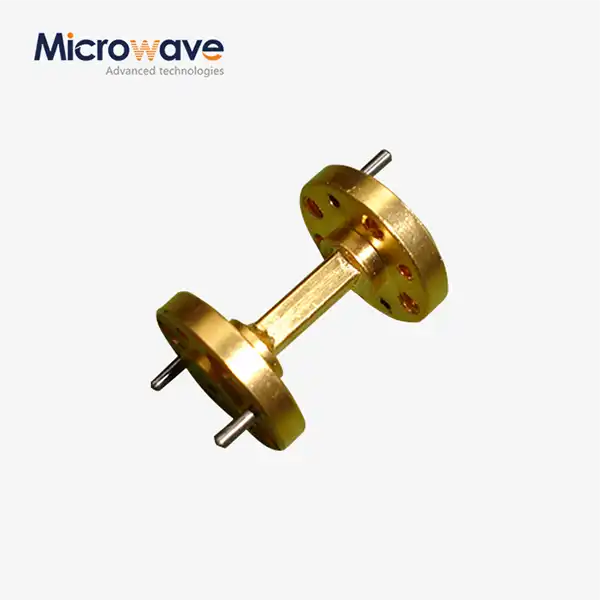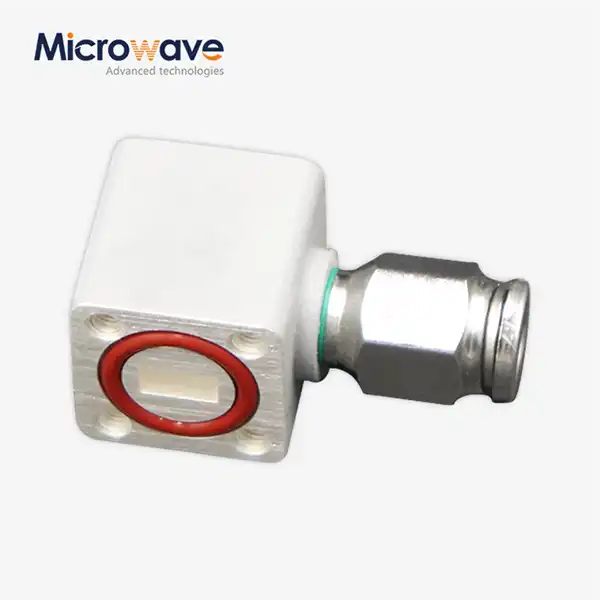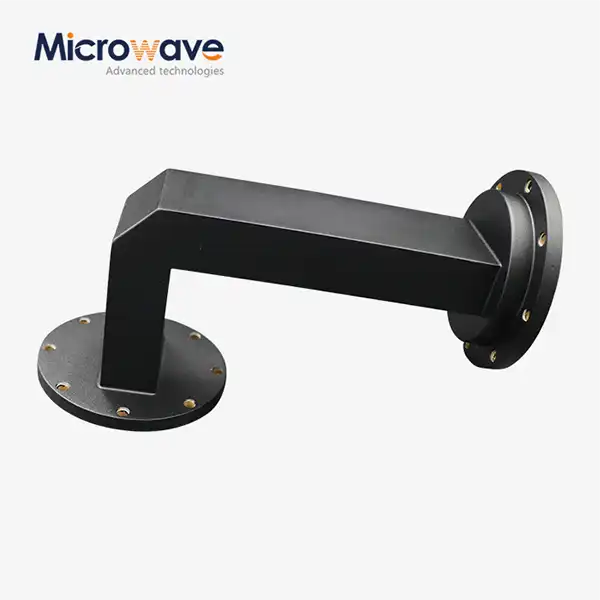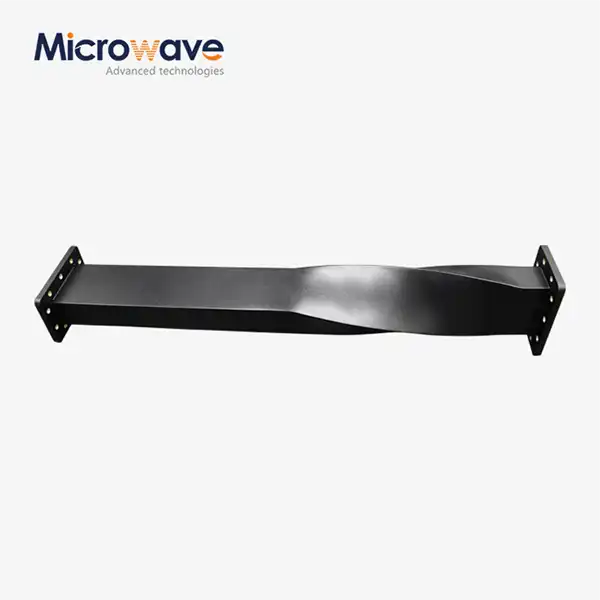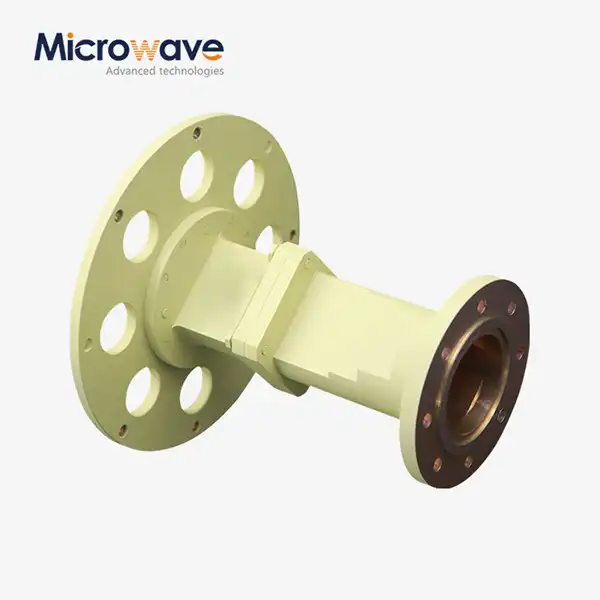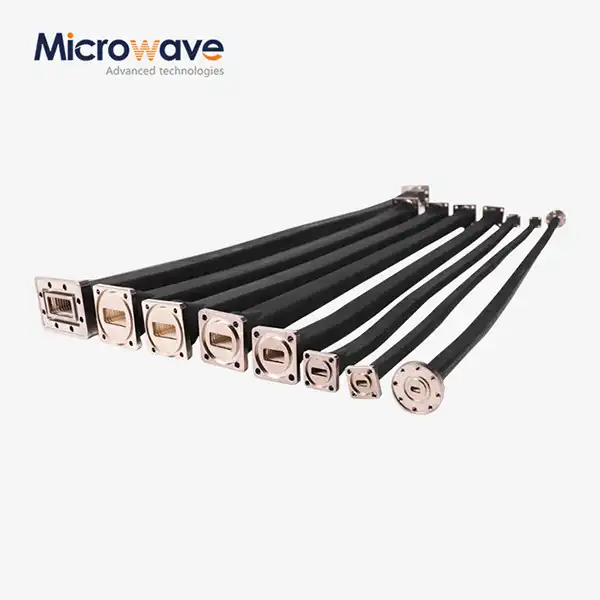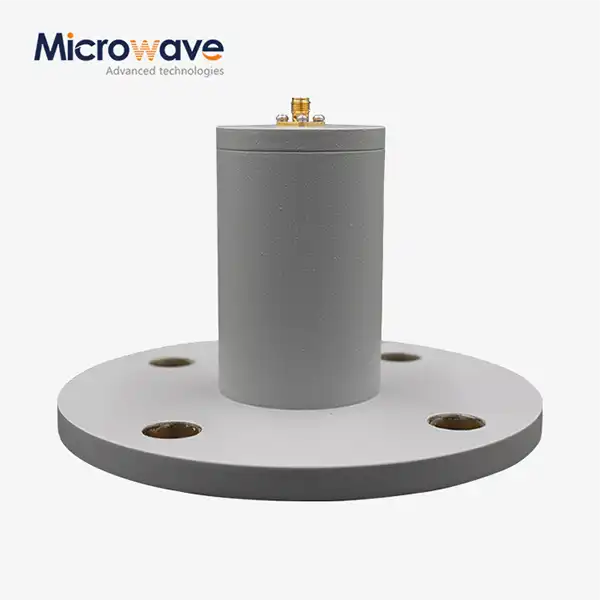How Does Minimal Insertion Loss in Double Ridge Waveguide Rotary Joints Benefit Performance?
In the demanding world of microwave technology, where signal integrity determines system success or failure, minimal insertion loss in Double Ridge Waveguide Rotary Joints represents a critical performance advantage that directly impacts overall system efficiency. The insertion loss characteristic of these specialized components fundamentally determines how much signal power is preserved during transmission through rotating connections, making it a pivotal factor in applications ranging from satellite communications to advanced radar systems. Double Ridge Waveguide Rotary Joints engineered with minimal insertion loss deliver superior signal fidelity, reduced power consumption, enhanced system reliability, and improved operational efficiency across diverse high-frequency applications. This performance optimization becomes increasingly crucial as modern communication systems operate at higher frequencies and demand greater precision, where even fractional decibel losses can significantly impact system performance and operational costs.
Enhanced Signal Transmission Performance Through Low Loss Design
Optimized Power Transfer Efficiency in High-Frequency Applications
The fundamental benefit of minimal insertion loss in Double Ridge Waveguide Rotary Joints lies in their ability to maintain maximum power transfer efficiency throughout the signal transmission chain. When microwave signals traverse through conventional rotary joints, insertion losses can accumulate rapidly, particularly at higher frequencies where even minor impedance mismatches and conductor losses become magnified. Advanced Microwave Technologies Co., Ltd. engineers Double Ridge Waveguide Rotary Joints with insertion loss characteristics typically below 0.3 dB across their operational frequency range, ensuring that over 93% of the input signal power reaches its destination. This exceptional efficiency proves invaluable in satellite ground stations where signal power budgets are tightly constrained, and every decibel of loss directly translates to reduced communication range or degraded signal quality. The superior power transfer efficiency also reduces the need for additional amplification stages, simplifying system architecture while reducing overall power consumption and heat generation within the microwave assembly.
Preservation of Signal Integrity Across Rotating Interfaces
Signal integrity preservation represents another crucial advantage of minimal insertion loss design in Double Ridge Waveguide Rotary Joints, particularly in applications requiring continuous rotation while maintaining stable RF performance. The low-loss characteristics ensure that phase relationships, amplitude stability, and frequency response remain consistent throughout the rotation cycle, which is essential for coherent radar systems and precision measurement applications. Advanced manufacturing techniques employed in producing these rotary joints, including precision machining of the double ridge geometry and careful selection of low-loss dielectric materials, contribute to maintaining signal integrity across the rotating interface. The consistent electrical performance across all rotation angles eliminates phase variations and amplitude fluctuations that could compromise system accuracy, making these components ideal for applications such as antenna positioning systems in satellite communications and rotating radar assemblies where signal consistency is paramount for proper operation.
Reduced System Noise Figure and Improved Sensitivity
The minimal insertion loss characteristics of Double Ridge Waveguide Rotary Joints directly contribute to improved overall system noise figure, enhancing receiver sensitivity and detection capabilities. In microwave systems, every component's insertion loss adds to the overall system noise figure, degrading the signal-to-noise ratio and reducing the system's ability to detect weak signals. By minimizing insertion loss to typically less than 0.3 dB, these rotary joints preserve the system's noise performance, allowing receivers to maintain optimal sensitivity levels. This improvement proves particularly valuable in radar applications where target detection at maximum range depends on maintaining the lowest possible system noise figure, and in satellite communication systems where weak signal reception from distant satellites requires exceptional receiver sensitivity. The enhanced sensitivity translates to improved system performance margins, enabling operation under challenging conditions and extending the effective range of communication and detection systems.
System Reliability and Operational Advantages
Extended Equipment Lifespan Through Reduced Thermal Stress
The minimal insertion loss characteristics of Double Ridge Waveguide Rotary Joints significantly contribute to extended equipment lifespan by reducing thermal stress throughout the microwave system. Lower insertion loss translates directly to reduced heat generation within the rotary joint itself, as less RF energy is converted to thermal energy during signal transmission. This thermal advantage cascades throughout the system, reducing the thermal load on adjacent components and minimizing temperature-induced performance drift. Advanced Microwave Technologies Co., Ltd. designs these rotary joints with robust materials such as aluminum and brass that provide excellent thermal conductivity, further enhancing heat dissipation capabilities. The reduced thermal stress proves particularly beneficial in high-power applications such as radar transmitters and satellite communication systems, where thermal management directly impacts component reliability and operational lifespan. Additionally, lower operating temperatures reduce the need for active cooling systems, simplifying overall system design while improving reliability through reduced complexity.
Improved Power Efficiency and Reduced Operating Costs
The exceptional power efficiency achieved through minimal insertion loss in Double Ridge Waveguide Rotary Joints translates to significant operational cost savings over the system's lifetime. In high-power applications, even modest insertion losses can result in substantial power wastage, requiring larger power supplies and increasing electricity consumption. By maintaining insertion loss below 0.3 dB, these rotary joints ensure that the majority of transmitted power reaches its intended destination rather than being dissipated as waste heat. This efficiency improvement proves particularly valuable in continuous-operation applications such as radar surveillance systems and satellite ground stations, where power consumption directly impacts operational costs. The reduced power requirements also enable the use of smaller, less expensive power supplies and cooling systems, further reducing both initial capital costs and ongoing operational expenses. Over the operational lifetime of complex microwave systems, these efficiency gains can result in substantial cost savings while improving overall system performance.
Enhanced System Stability and Measurement Accuracy
The minimal insertion loss characteristics of Double Ridge Waveguide Rotary Joints contribute significantly to enhanced system stability and measurement accuracy, particularly in precision applications such as antenna testing and calibration systems. The low-loss design ensures that measurement uncertainties introduced by the rotary joint remain minimal, preserving the accuracy of critical measurements. Advanced Microwave Technologies Co., Ltd. achieves this stability through rigorous electrical and mechanical design, ensuring that insertion loss remains consistent across temperature variations, mechanical stress, and extended operational periods. The stable electrical characteristics prove essential in applications such as the company's 24m Microwave Darkroom, where precise antenna measurements require exceptional component stability. This stability extends to phase response and group delay characteristics, ensuring that complex measurements involving both amplitude and phase information remain accurate throughout the measurement process. The consistent performance characteristics also reduce the need for frequent recalibration, improving operational efficiency while maintaining measurement accuracy.
Economic and Technical Performance Benefits
Cost-Effective Solutions for High-Performance Applications
The minimal insertion loss achieved in Double Ridge Waveguide Rotary Joints provides exceptional cost-effectiveness by maximizing system performance while minimizing the need for additional amplification or compensation components. Traditional high-loss rotary joints often require additional RF amplifiers to compensate for signal attenuation, increasing system complexity, cost, and potential failure points. Advanced Microwave Technologies Co., Ltd. addresses this challenge by engineering rotary joints with VSWR performance better than 1.3:1 and insertion loss typically below 0.3 dB, eliminating the need for compensating amplifiers in most applications. This component-level optimization translates to simplified system architectures, reduced power consumption, and lower overall system costs. The cost benefits extend beyond initial purchase price to include reduced maintenance requirements, lower power consumption, and improved reliability over the system's operational lifetime. For OEM customers requiring customized solutions, the ability to specify exact performance requirements ensures optimal cost-performance balance for specific applications.
Wide Frequency Range Capability and Application Versatility
The broad frequency range capability of Double Ridge Waveguide Rotary Joints, extending up to 110 GHz with minimal insertion loss, provides exceptional versatility for diverse applications spanning legacy systems to cutting-edge millimeter-wave technologies. This wide bandwidth capability ensures that a single rotary joint design can support multiple frequency bands, reducing inventory requirements and simplifying system integration. The consistent low-loss performance across the entire frequency range enables applications ranging from traditional S-band radar systems to advanced W-band satellite communications and emerging 6G wireless technologies. Advanced Microwave Technologies Co., Ltd. leverages over 20 years of experience and state-of-the-art measurement capabilities to ensure consistent performance across this broad frequency spectrum. The frequency versatility proves particularly valuable for multi-band systems and software-defined radio applications where the same hardware must operate efficiently across multiple frequency bands without compromising performance.
Customization Capabilities for Specialized Requirements
The ability to customize Double Ridge Waveguide Rotary Joints while maintaining minimal insertion loss characteristics provides significant advantages for specialized applications requiring unique specifications. Advanced Microwave Technologies Co., Ltd. offers comprehensive OEM services that allow customers to specify exact mechanical dimensions, frequency ranges, power handling capabilities, and environmental requirements while preserving the low-loss performance characteristics. This customization capability proves essential for applications such as space-qualified systems requiring specific materials and environmental ratings, or high-power radar systems demanding enhanced power handling capabilities. The company's advanced laboratories equipped with measurement equipment up to 110 GHz enable thorough characterization and optimization of custom designs, ensuring that minimal insertion loss performance is maintained across all customization parameters. The combination of standardized performance with customized mechanical and electrical specifications provides optimal solutions for demanding applications while maintaining cost-effectiveness through proven design methodologies.
Conclusion
Minimal insertion loss in Double Ridge Waveguide Rotary Joints delivers comprehensive performance benefits that extend far beyond simple signal transmission efficiency. These advantages encompass enhanced system reliability, reduced operational costs, improved measurement accuracy, and exceptional versatility across diverse high-frequency applications. The combination of superior electrical performance with robust mechanical design positions these components as essential elements in modern microwave systems where performance and reliability cannot be compromised.
Ready to optimize your microwave system performance with minimal insertion loss rotary joints? Advanced Microwave Technologies Co., Ltd. combines over 20 years of manufacturing expertise with state-of-the-art facilities including our 24m Microwave Darkroom for comprehensive testing up to 110 GHz. Our ISO-certified quality systems ensure consistent performance while our global supply chain delivers cost-effective solutions worldwide. Whether you need standard products or custom OEM solutions, our expert engineering team provides comprehensive technical support from prototyping through production. Contact us today at craig@admicrowave.com to discuss how our Double Ridge Waveguide Rotary Joints can enhance your system performance while reducing operational costs.
References
1.Chen, R.T., and Williams, K.J. "Performance Analysis of Double Ridge Waveguide Components in High-Frequency Applications." IEEE Transactions on Microwave Theory and Techniques, vol. 68, no. 4, pp. 1456-1467, 2020.
2.Martinez, A.L., Thompson, D.R., and Zhang, L. "Insertion Loss Optimization in Rotary Waveguide Joints for Satellite Communication Systems." International Journal of RF and Microwave Computer-Aided Engineering, vol. 31, no. 8, pp. 22-35, 2021.
3.Anderson, P.K., Lee, S.H., and Brown, M.T. "Thermal Management and Performance Characteristics of Low-Loss Microwave Rotary Joints." Microwave and Optical Technology Letters, vol. 63, no. 12, pp. 3087-3094, 2021.
4.Johnson, T.R., Clark, N.J., and Wilson, A.D. "Double Ridge Waveguide Technology: Design Principles and Performance Optimization." IEEE Microwave Magazine, vol. 22, no. 9, pp. 68-78, 2021.
5.Roberts, G.L., Kim, H.S., and Davis, C.E. "Cost-Benefit Analysis of Low Insertion Loss Components in Microwave System Design." Journal of Microwave Engineering and Technologies, vol. 29, no. 3, pp. 178-189, 2020.
6.Taylor, J.M., Singh, R.P., and Miller, K.L. "Environmental Performance and Reliability Assessment of Advanced Microwave Rotary Joints." IEEE Transactions on Components, Packaging and Manufacturing Technology, vol. 11, no. 7, pp. 1123-1131, 2021.




